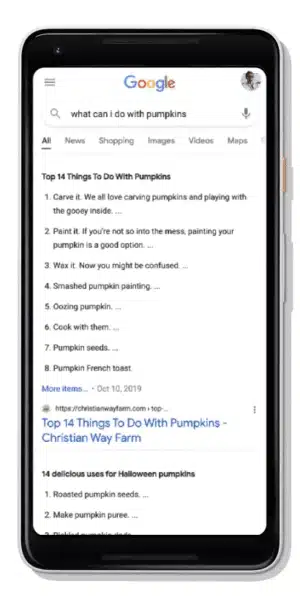How Google’s continuous scroll can affect impressions and CTR
Reporting remains the same in Search Console, but eliminating the line between pages may result in new user behaviors, which can create winners and losers.
Last month, Google rolled out continuous scroll to its mobile search results pages. For users, the change represents a minor tweak to Google’s interface, but the obfuscation of pages in the search results had SEOs questioning how that tweak would impact reporting and potentially affect user behavior.
What is continuous scroll?
Announced in October 2021, continuous scroll replaced Google’s traditional, paginated search results pages for mobile users. Instead of presenting users with a list of pages at the bottom of the first results page, Google now loads the next page of results automatically.

Up to four pages of results will automatically load (including the first page). At the bottom of the fourth page, users can tap on the “See more” button to load more results.
The potential impact on impressions and CTR
When continuous scroll initially rolled out, SEOs had questions about how reporting would work and how the change might translate to new user behavior. In short, reporting within Search Console remains the same as it did prior to continuous scroll, but impressions may increase for positions 11-20.
No change in Search Console reporting. “Continuous scroll also does not change how position reporting works in Search Console,” Danny Sullivan, Google’s public search liaison tweeted, “Positions reporting remains as if pages weren’t automatically loaded.”
“Nothing changes for Search Console – position is position. We don’t track pages there,” Search Advocate John Mueller reiterated.
How continuous scroll may impact user behavior. “I think CTR in positions 1-3 is unlikely to drastically shift, but people relying on 8-10 rankings for the bulk of their traffic might see some drop off in favor of former page 2 positions,” Tom Capper, senior search scientist at Moz, told Search Engine Land. “That said, relying on positions 8-10 as part of your strategy was always a precarious position, so perhaps this will make the impact of ranking fluctuations on those people a bit less harsh than has historically been the case,” he added, remarking on a hypothetical scenario in which a brand’s listings at the bottom of page one slip to page two.
Since continuous scroll makes it so much easier for users to reach page two of the results, impressions for listings in positions 11-20 may see a slight increase. “So probably what will happen is impressions go up a little bit. Clicks stay the same. That means your click-through rate tends to go down a little bit,” Mueller said during Google’s SEO office-hours. If click-through rate does decrease, it may be difficult to determine whether that’s due to the added impressions brought on by continuous scroll or simply because users didn’t find the result relevant.
Most of the SEOs that spoke to Seach Engine Land for this article commented that they have yet to see any significant changes in impressions. However, Lidia Infante, senior SEO strategy lead at Rise at Seven, did notice an increase: “Impressions (GSC) on tracked keywords on mobile on the second page are up by 10%,” she said, “It’s quite a limited sample, but it hints strongly at a change.”
Continuous scroll and the future of search
For decades, paginated search results have been the standard. Search results features, ads and other user interface considerations were planned with page one at the forefront. Continuous scroll has changed that and could open up entirely new opportunities — the lion’s share of which are likely to work in favor of search engines.
“This might open up space for Google to more seamlessly transition into a more feature-heavy SERP in the future,” Capper said, “By having no hard limit on page 1, there no longer needs to be any concern about a minimum number of organic results in the initially loaded content.” More search results features may eliminate the need for users to click on a result by resolving their query right from the SERP. If search engines can keep users on properties they own, they might also have more opportunities to show more ads.
However, some SEOs seemed to have welcomed the change due to the significant visibility difference that used to exist between position 10 and position 11 (which users had to go to page two of the results to get to prior to continuous scroll). “Broadly this is bad news for SEOs, and I’ve been surprised to see so many SEOs welcome it,” Capper said, “Reducing the value of ranking higher is reducing the marginal value of our craft, as I see it — it means our work is worth less.”
Contributing authors are invited to create content for Search Engine Land and are chosen for their expertise and contribution to the search community. Our contributors work under the oversight of the editorial staff and contributions are checked for quality and relevance to our readers. The opinions they express are their own.
Related stories
New on Search Engine Land